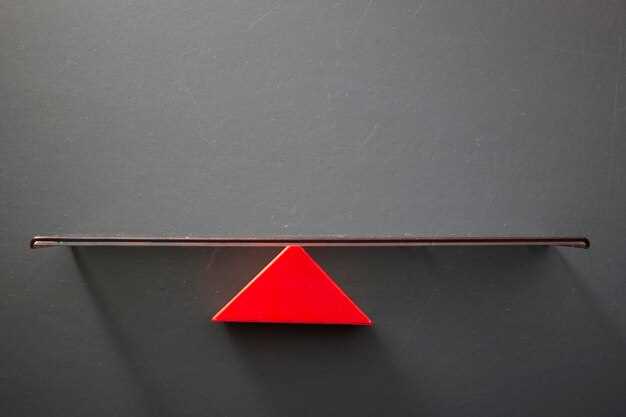

In the world of automotive performance, achieving the right balance is crucial for optimal handling and driving experience. Corner balancing, a technique often employed in motorsports and performance tuning, focuses on the distribution of weight across each wheel. This process ensures that the vehicle maintains an even stance, minimizing understeer or oversteer during dynamic maneuvers.
The concept of cross weight is central to corner balancing. It refers to the weight distribution between diagonal pairs of wheels, which can significantly affect how a car responds to steering inputs. By fine-tuning this balance, drivers can improve traction, stability, and overall performance, allowing for better cornering abilities and a more enjoyable driving experience.
Understanding corner balancing is not merely a technicality; it plays a vital role in maximizing a vehicle’s performance on the track or on the road. With the right adjustments, drivers can unlock the full potential of their cars, ensuring that every twist and turn is met with precision and control.
How Corner Balancing Affects Vehicle Performance
Corner balancing is a critical aspect of vehicle performance that directly influences handling, stability, and tire wear. It involves adjusting the weight distribution across the four corners of a vehicle, ensuring an optimal cross balance. This adjustment is essential for high-performance cars and racing applications, where precise handling characteristics are crucial.
When the weight is not evenly distributed, one corner of the vehicle may carry significantly more load than the others. This imbalance can lead to undesirable handling traits, such as oversteer or understeer, making the vehicle difficult to control. By achieving a proper balance, drivers can enjoy improved responsiveness, allowing for better cornering and stability during high-speed maneuvers.
Additionally, corner balancing affects tire performance. Uneven weight distribution can cause excessive wear on tires, leading to a shorter lifespan and inconsistent grip levels. When the cross balance is optimized, all tires maintain better contact with the road surface, enhancing traction and maximizing the performance potential of the vehicle.
Moreover, corner balancing helps in achieving predictable vehicle dynamics. Drivers seeking to enhance their skill set on the track or even on winding roads will find that a well-balanced vehicle provides feedback that is easier to interpret. This allows for more precise throttle and steering inputs, resulting in a more rewarding driving experience.
Cross Weight Calculation: Practical Steps for Accuracy

Cross weight calculation is essential for achieving optimal balance and handling in a vehicle. Accurate cross weight measurements help to analyze the distribution of weight across the wheels, ensuring that each corner of the vehicle is appropriately balanced for improved performance.
To perform cross weight calculations, follow these practical steps:
1. Gather Equipment: Obtain a reliable set of scales capable of measuring individual corner weights. Ensure that the scales are calibrated and set to zero before use.
2. Prepare the Vehicle: Position the vehicle on a level surface, and make sure it is free of any additional loads. Close all doors and check tire pressures to ensure they are consistent and within the recommended range.
3. Weigh Each Corner: With the vehicle on the scales, record the weight at each corner (front left, front right, rear left, rear right). This data is crucial for determining the overall balance of the vehicle.
4. Calculate Cross Weights: Once individual corner weights are recorded, compute the cross weights by adding the weights diagonally: front left with rear right, and front right with rear left. For example, if the front left weight is 1000 lbs and the rear right weight is 900 lbs, the cross weight calculation will be 1000 + 900 = 1900 lbs.
5. Analyze Balance: Compare the cross weights with the total weight of the vehicle. Ideally, the cross weight percentage should be around 50%. Deviations from this figure may indicate imbalance, affecting handling characteristics.
6. Adjust Suspension Settings: If the cross weight is off-balance, consider adjusting suspension settings. This may involve altering ride height, spring rates, or weight distribution through strategic placement of components within the vehicle.
7. Recheck and Fine-tune: After making adjustments, it’s crucial to recheck the corner weights and perform another cross weight calculation. Repeating this process ensures that the desired balance is achieved, leading to improved handling and overall stability on the track.
By following these steps, car enthusiasts and professionals can achieve precision in cross weight calculation, resulting in a well-balanced vehicle that enhances handling and performance during driving conditions.
Improving Handling Balance Through Suspension Adjustments

Achieving optimal handling balance is crucial for enhancing a vehicle’s performance on the road or track. One of the most effective ways to improve this balance is through suspension adjustments. Properly tuning your suspension allows for better weight distribution across the vehicle, leading to increased stability and control during cornering.
When adjusting the suspension, it is essential to focus on both the ride height and damper settings. Lowering the ride height can reduce the vehicle’s center of gravity, which helps to minimize body roll and improve cornering performance. Additionally, adjusting the damping settings can influence how weight is transferred during dynamic maneuvers. A stiffer setup may reduce body movement, allowing for quicker responses to steering inputs.
Crossweight adjustment, also known as corner weight adjustment, plays a crucial role in achieving balance in the suspension system. By redistributing the weight across the four corners of the vehicle, it’s possible to optimize grip and improve handling. This adjustment ensures that the tires maintain consistent contact with the road surface, enhancing overall traction during turns.
Moreover, fine-tuning the suspension geometry, including camber and toe settings, can further enhance the vehicle’s handling balance. Proper camber angles allow the tires to maintain optimal contact with the road, especially during cornering. This setup prevents excessive tire wear while maximizing grip, providing the driver with better feedback and confidence when navigating curves.
In conclusion, making informed suspension adjustments can significantly improve handling balance. By focusing on weight distribution and implementing effective crossweight adjustments, drivers can enhance their vehicle’s performance, leading to a more enjoyable and competitive driving experience.







